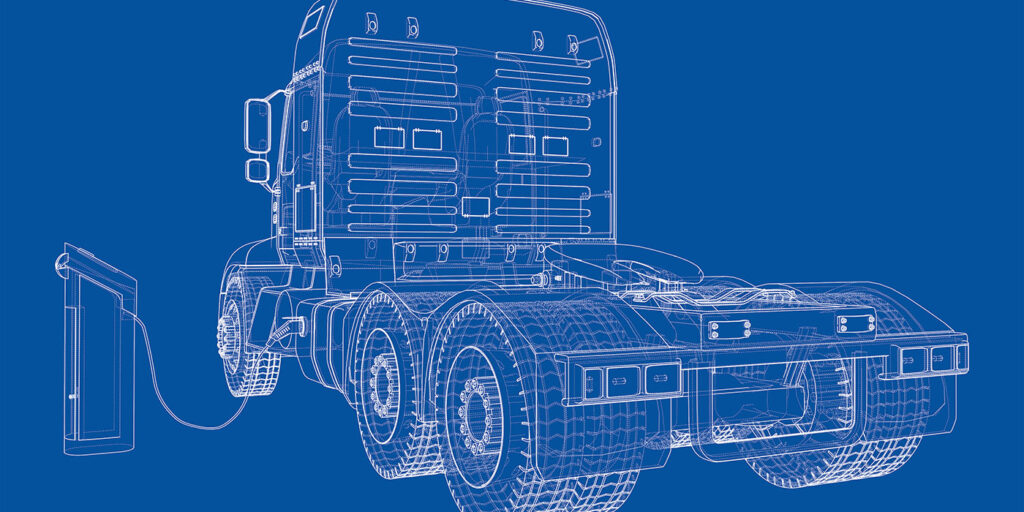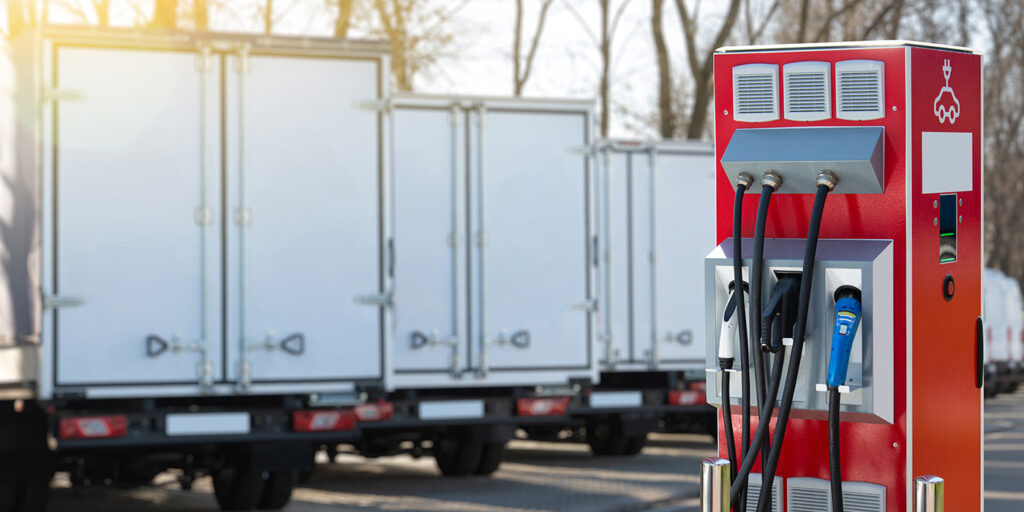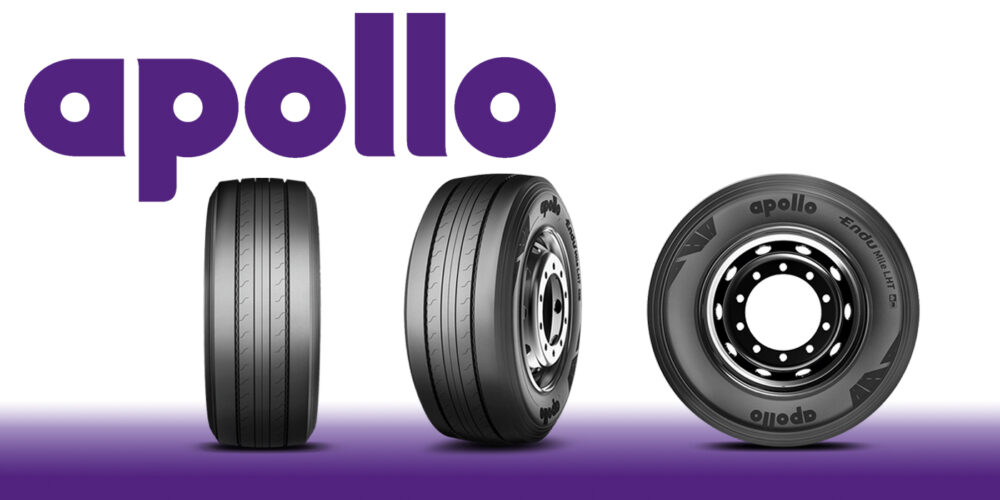It seems as if almost every week I’m reading announcements of new electric truck models being presented in concept, in prototype, or ready for deployment on the road. It’s an exciting time within the transportation industry, but with that excitement comes uncertainty around how fleets will be able to integrate electric vehicles (EVs) into their operations. To make specifying and deploying an electric fleet a reality, companies will need to invest in their charging infrastructure, select charging equipment that fits their operations, and ensure that their vehicles and charging systems are compatible.
The three key things fleets can do now as they prepare to invest in EVs
1. Adopt standards-based charging when specifying equipment.
2. Evaluate their current operations; especially refrigerated fleets should review dispatch scheduling and in-yard loading and staging durations.
3. Determine the charging infrastructure and placement that fits their operation.
Why charging standards are important
Charging standards play an essential role in helping the industry adopt EV technology faster. When you have different vehicles or systems that have different plugs and connectors, as well as different ways of interfacing, it creates confusion in the market and more compatibility problems — ultimately delaying implementation.
Cell phones are a great example. Many of us know firsthand how frustrating it can be when your cell phone is on the brink of losing battery power and you’re trying to plug it in, but nobody has the plug and connector you need. Why does this problem exist? There are two main reasons:
1. Time and technology advancements, and
2. No standard plug and connector interface that every cell phone manufacturer has adopted.
The brand-specific interface standards create barriers to interoperability.

Charging standards you need to know
The two main charging standards developed and being adopted in the commercial transport market are SAE J1772 and Combined Charging System (CCS). These standards are also used in passenger cars and light-duty trucks. When determining which standard to adopt, fleet owners need to think about how much power they need and how much power can be delivered based on the application.
SAE J1772 (Aligned with IEC 62196 Type 1) describes AC charging in North America. This standard is well suited for light- to medium-duty vehicles and allows for grid connections at 120-240VAC single phase up to 19.2kW and 80A. This type of charging equipment is defined as AC Powered EVSE or Electric Vehicle Supply Equipment. The AC power is converted to DC for battery charging using an onboard charger (OBC) that is part of the electric vehicle.
The capacity of the OBC in combination with the rating of the J1772 EVSE connection determines how fast the battery can be charged. This standard is limited to single-phase electrical power, which can mean additional planning for large commercial facilities that use three-phase electrical power for most equipment.
For transport refrigeration applications, sizing of the OBC and EVSE is critical to running the refrigeration system and charging the vehicle at the same time. A mismatch of either component in the vehicle specification or infrastructure planning can result in a system that is not fully powered, which can lead to decreased vehicle utilization.
The CCS utilizes the AC port from J1772, and a DC high-speed charging connection. This standard is used on light through heavy duty vehicles, but many heavy-duty vehicles use CCS exclusively. CCS charging provides DC power directly to the battery with the power conversion located in an offboard charger. Charging times are dependent on many factors:
● Charger capacity
● Battery size
● Battery preconditioning status
DC chargers can be purchased with single- or three-phase input and from 25kW up to 350kW or larger, and can easily support all sizes of transport refrigeration applications. Fast charging is essential for heavy-duty commercial trucks that require two to four times more battery capacity than smaller vehicles.
Along that same line,, the CharIN organization is sponsoring a Megawatt Charging System or MCS. MCS is currently under development with limited trial deployment. This system is targeted exclusively at heavy-duty transport applications and will be rated to 3000 amps at 1500 volts, providing up to 4.5 megawatts of charging power.
Another charging standard that has been released but is still in commercial development is SAE J3068. This standard uses a larger-capacity AC connection that has the ability to use three-phase up to 600VAC while also supporting DC charging similar to CCS. With low rates of adoption, the requirement for larger and more expensive on-board chargers, and limited EVSE equipment supplies, the future of J3068 is unclear.
For transport refrigeration applications, charging standards are likely to be adopted because of the assurance of a compatible plug. TRUs are precooled or staged and loaded for delivery. During this process, the standard charging plug can be used to both top off the batteries and run the transport refrigeration system prior to the truck or trailer leaving for the delivery trip. In most cases, fast charging is not required but will likely still be the preferred interface, even at lower rates of charging in the 25–30kW range.
Planning a charging infrastructure for your refrigerated fleet
For companies considering adding EVs to their fleet within the next two years, the time to plan infrastructure is now. It’s important to spend the time upfront on the system design because you only get one chance to tear up the parking lot, bury the conduit, pull wires, and pour concrete. The entire process from initial permitting and groundbreaking to when chargers are delivered and up and running can take 18 to 24 months.
Assembling a team that will help you through the planning process will make implementation easier. This team can include local power utility providers, government officials, electric charging infrastructure consultants, and OEM partners, like Thermo King. Thermo King regularly meets with companies considering electric vehicles. We can provide fleets and their partners with insight on what requirements and configurations are best suited for transport refrigeration. Plugging in refrigeration equipment as an alternative to diesel operation has been offered by Thermo King since the 1950s. Electric infrastructure requirements and potential obstacles are something we, as a company, know very well.
Fleets may already have plug-in stations or “shore power” for their refrigeration equipment. Companies that are beginning to design their charging infrastructure can use their existing shore power as a reference. Fleets also have the option of adding shore power as an interim step to battery-powered transport refrigeration equipment.
Refrigerated fleets should consider an electric vehicle connectivity plan that takes into account both EV charging systems and refrigeration shore power equipment. This approach provides the charging infrastructure needed as companies scale to a fully electric fleet, while also providing carbon-reduction options for their current transport refrigeration equipment.
Placement of these infrastructure components is critical to optimize utilization. While high-power, high-rate charging is required for the primary truck charging, refrigerated fleets also need to consider adding lower power chargers, like 25–30kW CCS equipment, to the loading dock doors and staging pad locations. These optimized connections keep the truck or trailer batteries topped off while also maintaining the refrigerated load at an ideal temperature. At this step in the planning process, yard operations and logistics should be reviewed. Current procedures and transport scheduling for diesel-powered equipment will likely need to be revised for battery-powered refrigeration equipment. This will help ensure that delivery route performance is not impacted.
The electrification of transport refrigeration continues to progress, and overall advancements in EV technology overall are moving at a rapid pace. It is vital for all the key players — utilities, government, transportation companies, and OEMs like Thermo King — to work together to ensure we have the infrastructure and standards that will allow fleets to plug in and charge their EVs quickly and efficiently.
Matt Srnec is an electrical systems lead engineer for Thermo King Americas. In this role, he leads projects to develop new technology and systems for transport refrigeration. He is a also member of the Technology Maintenance Council and of SAE, working in the SAE Truck and Bus Electrical Systems Committee. Matt earned his BS in Electrical Engineering from the University of Wisconsin-Platteville.














